News
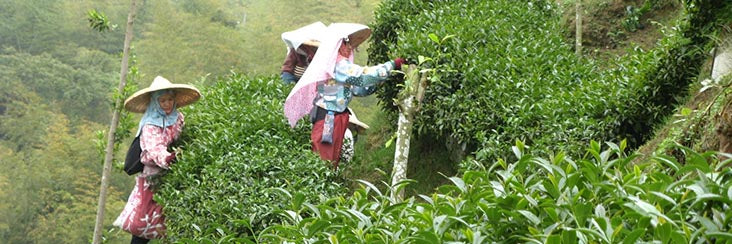
Tea Story #2: Shan Lin Xi High Mountain Black Tea, Winter 2012
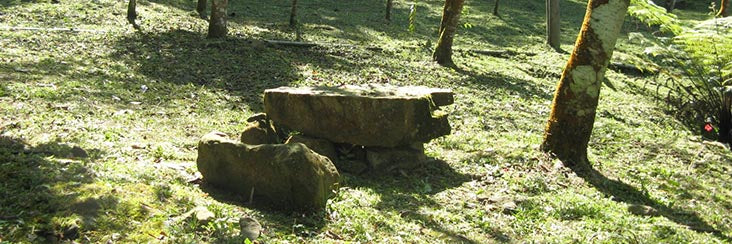
Winter Tea Shopping – Sneak Preview
We celebrated the conclusion of the Nantou County Global Tea Expo quietly, as the organizer Tony Lin and his wife Lisa were quite relieved to finally relax in their home after the three-week-long event. After staying the night in their home, I visited a few friends in Lu Gu - the home of Dong Ding Oolong Tea, to see how the winter harvest was going. A cold spell early in the growing season slowed the winter flush which has resulted in a repeat of last year's record low winter yield.
The first farmer I dropped in on had already completed his harvest and was roasting his first batch of tea in preparation for the Lu Gu Farmers' Association winter competition. It was a pleasure to taste the first brew of freshly harvested winter leaves that were still in the process of being roasted. The award winning tea maker deemed that they were just about done and had less than an hour left of their long slow roasting process. Mr. Chen is Tony’s cousin and was the first tea farmer I met 20 years ago.
Mr. Chen making New Year's offering in his "Tea Brewing Park" in Xi Tou, Lu Gu Township.



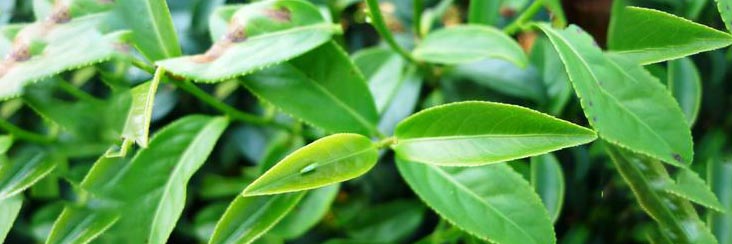
Tea Story #1: Shan Lin Xi High Mountain Concubine Oolong Tea, Winter 2011
An elusive type of tea that varies with each batch made, from season to season – depending on the presence of a small insect. Concubine Oolong is the result of the leaves being bitten by a tiny fly during growing season. This causes a kind of "scarring" of the leaf which results in partial oxidation while the leaf is still growing. It also instigates an immune system response in the plant, resulting in a unique flavor. Normally, this bug is deterred by the regulated use of a water soluble pesticide sprayed on the plants early in the growing season. More and more, farmers are allowing their plants to go unsprayed at least one season in the year. Typically this is done in summer, the most prolific season for the insect that is responsible for the production of Concubine tea.
Produced in Northern Taiwan, a more common name for "bug bitten" tea is Oriental Beauty (Dong Fang Mei Ren - also called Bai Hao Oolong or Peng Feng Cha). Oriental Beauty is made from a slightly different green heart oolong varietal than that which is cultivated for high mountain tea in Central Taiwan. Concubine also differs from Oriental Beauty in that the Concubine leaves are tightly rolled in the manner of a modern Taiwan Oolong, rather than the traditional mainland China method of curled, open leaves. Tightly rolling the leaves is a Taiwanese innovation that protects and preserves the tea.
Our tea mentors happened upon this batch of tea while tasting a farmer friend’s Shan Lin Xi high mountain spring tea. The farmer mentioned in passing that he had a batch of tea from the winter prior’s harvest that had been affected by this bug due to an oversight in not spraying a small section of his self-run farm. It is very rare to find winter tea produced in this fashion from a high elevation farm.
It is a relatively small farm, managed by a husband and wife team who transformed their plot of virgin high mountain bamboo forest into a tea garden just ten years ago. Currently in its prime age, the tea garden is at about 1,600 meters elevation in one of the largest and most popular regions of Taiwan for producing top quality high mountain oolong tea. This couple manages their farm by themselves, using only natural fertilizers, zero weed killers, and only a minimal amount of water soluble pesticides early in the growing season. They produce approximately 300 pounds of tea from a typical day's spring harvest, compared to 1000 pounds a day from larger productions in the area.
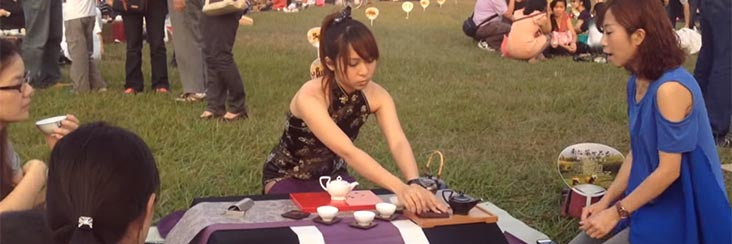
Final day at the Nantou Global Tea Expo, 2013.
The last Sunday in October was the final day of the Nantou County Global Tea Expo. So I made my 4th visit to the event to make a last round of meeting and talking with tea farmers as they wrapped the three week stint of vending their produce, and also to attend the fashion show featuring modern style Chinese women's wear.
I sat in a proper theater that is a remnant of early KMT or perhaps even Japanese Central Government (pre WWII) in Nantou County, and watched women of stature and grace model contemporary renditions of traditional Chinese fashion. The style was naturally elegant in a sort of traditionally dignified way. The tasteful, non-commercial production of the show was also much appreciated. There was an upbeat Asian techno-jazz track that was played intermittently with live performance on the Gu-qin (a piano-type instrument where the strings are plucked rather than struck). It really was a fine fusion of traditional and modern culture.
After the show, I headed to the ice cream vendor who was making fresh ice cream on site of only one flavor per day - that of a locally produced tea. I got to taste Tie Guan Yin Oolong on my first day, and Dong Ding Oolong flavor on my second and last chance to sample the handmade tea-flavored ice cream - made fresh daily throughout the event. It was delicious!
With my cone of Dong Ding Oolong ice cream in hand, I made my way to the long, cavernous, red arched-roof tents filled with hundreds of tea vendors serving their own produce to the public for free. I finally sat down at the table of a farmer who I’d met a few times before and who had told me of his recent project of leasing a tea garden on Dong Ding Mountain and cultivating it organically. Although it has already been tested and certified organic, it is still in its transitional phase in that the yield of leaves is very low as the plants adjust to natural growing conditions. This winter harvest produced a mere 50 jing (approx. 60 lbs) of tea. The type of tea he is making is an interesting innovation however - in a retro sort of way. He is harvesting leaves that have been more or less affected by the insect that is responsible for the creation of Oriental Beauty and Concubine Oolongs. He processes them more in the fashion of Oriental Beauty - drying them into loosely curled leaves that have been 60-70% oxidized and then roasts them at low temperatures in order to completely deplete them of moisture content for stability and preservation purposes.
I sat at a few other tea vendors' tables as the energy of the expo wound down and the farmers began packing up their goods to take home after three full weeks of serving the public at their tea stations. One was a well established tea merchant with 3 stores in Central Taiwan. The guy who served me tea was about my age and has inherited the business from his father. They specialized in traditional style teas such as Oriental Beauty, Tie Guan Yin (original style rather than the new trend of Green Guan Yin), Aged Oolongs, and Black Teas. I really appreciated their classy yet modest brand representation. I felt like I was talking with a true traditional tea merchant in the 21st Century. It was a very brief yet poignant meeting and I really look forward to visiting their home base in Nantou City some day in the near future.
I also met a farmer with a tea garden located in an area I did not know tea was grown - on the eastern slopes of He Huan Mountain, where I've ridden many times and knew there were no roads off of the main route that traverses the pass at about 3000m. The eastern side is gorgeous rugged terrain with patches of primary growth below the treeline and zero development other than a solitary hotel with stunning views of sunrise above a sea of clouds almost daily. I learned from this farmer, however, that there are foot paths from the main road, as well as monorail tracks run by power generators to cart the bushels of fresh tea leaves harvested by hand on land that is only accessible on foot. So these bushels of freshly picked leaves are collected at the roadside and carted off to a nearby factory for processing. This is a new frontier of high mountain tea cultivation that I have yet to explore, and in an area that is some of the most rugged and undeveloped high elevation terrain that I have seen in my 20 years of mountain exploration.
The main purpose of my final visit, however, was to continue into the foothills of Deer Valley to celebrate the conclusion of a job well done by the organizer of the Expo - Tony Lin. It was a celebration of the simplest kind. Tony, his wife Lisa, the new principal of the local Junior High School - Patricia, who acted as MC of various events at the Expo, and I all headed for Tony and Lisa's home in Lu Gu from the Expo. We arrived after dinnertime, but none of us had eaten, so Lisa got creative in an impromptu way to feed us from her kitchen that had been neglected during their busy expo time. Soon after, we were joined by a mutual tea friend who I’ve known for a long time and have learned a lot from in the last several years in relation to Taiwan tea, as well as fine Scottish Whisky - which he provided for the occasion.
Video of the '1000 People Brew Tea Event' at the Nantou Global Tea Expo, 2013.
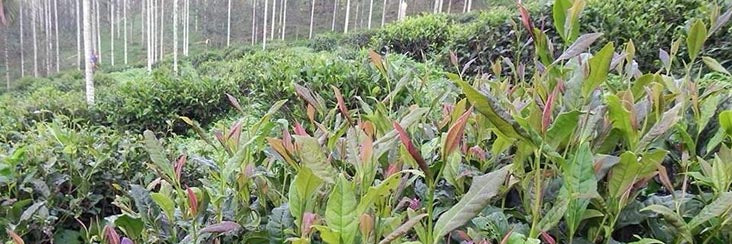
Wild Indigenous Taiwan Mountain Tea
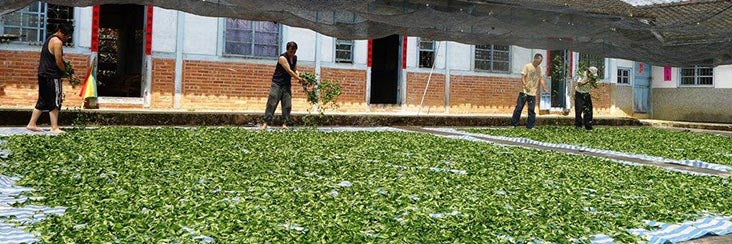
What is Artisan About Artisan Tea
This post was originally shared with our friends at TChing, they have a great tea blog, check them out.
As people interested in premium teas, we have all been exposed to the term “artisan” being used in many contexts. This begs the question as to what actually defines a tea as being artisan. This post is meant to begin a conversation, with follow ups on how this issue is being addressed within the industry here in Taiwan.
Reflecting on this question, I was inspired to call on a friend with passionate conviction on the topic. I first visited Mr. Lin in his tea factory and home - a traditional 3-sided house on Dong Ding Mountain - some 20 years ago. One of three brothers who inherited the tea farm, he became the representative of their tradition by moving off the mountain and raising his family in the city. He has been a professional tea judge at the Lu Gu Farmers’ Association Tea Competition for many years, and has been continually involved in the education and representation of tea culture in Taiwan. He is passionate about his inheritance of the Dong Ding Oolong tradition, as well as highly informed of the trends in Taiwan’s tea industry - both past and present.
In two words, his essential definition of artisan tea is all about “handmade” and “oxidation” - which in this case are one in the same process. The leaves need to be shuffled by hand repeatedly over several hours throughout the oxidation process. These terms immediately led into other factors such as how much tea can be harvested and processed at once using traditional methods, and who is employing these deep and complex procedures, and the discussion ensued. Of course, this is the response from a Traditional Dong Ding Oolong Tea artisan - so we are referring here only to what defines “Artisan Oolong Tea”. Our conversation touched on many factors, but his answer centered on processing methods - which prompted the recollection of my early visits to tea country.

At that time, all I saw in the factories I visited were the traditional woven bamboo trays that were filled by hand with freshly wilted leaves exuding a heady yet truly refreshing aroma in racks about 200cm high mounted on wheels. A small forest of racks filled small spaces in which they were rearranged systematically amidst frequent shuffling of the leaves in their trays by hand, combined with tumble rolling in a large woven bamboo horizontal cylinder.. The timing of the shuffling by hand and tumbling was largely determined by examining (touching, smelling, and seeing) the state of the leaves and how far along in the wilting and oxidizing process they were.
Some factories had two or three tumbling cylinders accommodating relatively large harvests - which then were maybe 600 台斤 茶青 or nearly 700 pounds of freshly harvested leaf - which produces about 175 pounds of tea. That was a large harvest on the farms I was familiar with at that time, but that’s only because my first contact was with Traditional Dong Ding Oolong artisans whose tea factories were typically built into their homes.
This is the context and small-scale production level that my friend referred to in response to my question. It is his firm conviction that artisan oolong tea is comprised of hands-on contact with the leaves as they are processed. The frequent shuffling of the leaves by hand is an essential aspect of proper oxidation. According to him, without this process, it is not artisan tea. Beyond oxidation, there are other steps in the processing of oolong that have been mechanized or simply eliminated - such as rolling methods and post production roasting - that are essential in the making of Traditional Dong Ding Oolong.
Hands-on contact with the leaves is far more than a labor intensive processing method. It is based on an experienced understanding of the overall conditions that each harvest entails - beginning with the growing season, the weather at harvest time, and the state of the leaves as they are processed.
This understanding of the leaves prompts the artisan to adjust the processing methods according to the current conditions. The freshly picked leaves are also brewed and tasted at different stages in the processing which determines the timing and extent of each step.
Traditional tea making is an integrated process determined by expertise that is gained over years and generations of careful observation and trial and error learning. This is why it cannot be done by standardized procedures employed by hired labor. It requires a living apprenticeship that transmits understanding and skill.
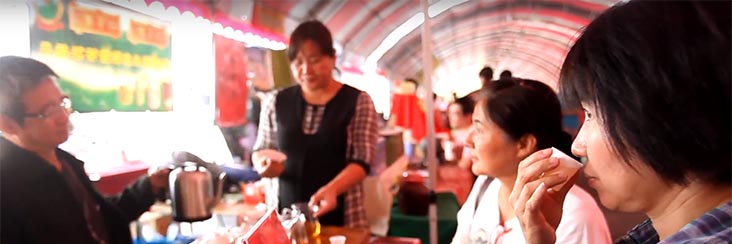
Nantou County Tea Expo Video Walkthrough #2
Take a walk with us through the Nantou County Global Tea Expo. This is Taiwan tea culture coming together for 3 weeks of sharing.
Share and subscribe if you enjoy these videos and would like more Taiwan tea culture on video.
Enjoy!
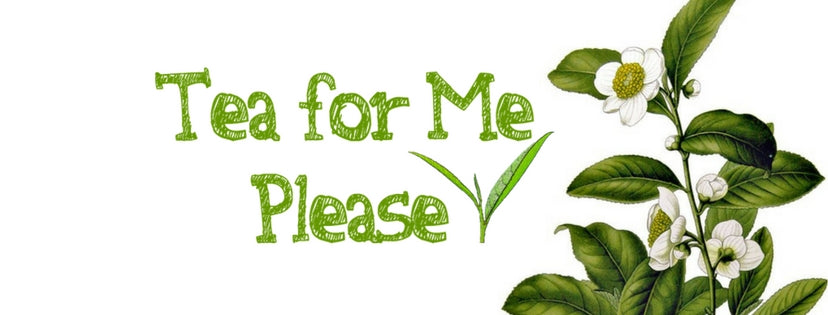
Tea for Me Please, Eco-Cha's Guest Post: Taiwan Mountain Tea - The Indigenous Plant
Andy wrote a very interesting piece on the indigenous tea plant in Taiwan. We've shared it first with our friends at Tea for Me Please, head over there to have a read about a 100 year old tea tree in central Taiwan!
Taiwan Mountain Tea - The Indigenous Plant

The origins and meaning of our name. Eco-Cha/一口茶

Name & Mission
Eco-Cha is pronounced the same way in English and Chinese and carries meaning in both languages. Eco-Cha in Chinese means 'A Sip of Tea'.
Created out of our dedication to artisan tea culture and the realization of how small, family-run farms in Taiwan are progressively employing eco-friendly methods of tea cultivation, this name is testimony of our commitment to the preservation of traditional artisan tea production and the promotion of sustainable agriculture in the tea industry.
No matter which language or culture Eco-Cha is spoken or heard in, it carries meaning. In English 'Eco-Cha' represents our commitment to sustainably produced teas and the artisan tea industry in Taiwan. In Chinese it is a reminder to stop, breathe, take a sip of tea and be in the present moment.
Name & Language
The English pronunciation of Eco-Cha is almost the same as the Chinese pronunciation of 一口茶. The only difference being that Chinese is a tonal language, and must be spoken with certain intonation.
-
一 (Yi) means 'One' and is pronounced like the 'ee' in 'bee'
-
口 (Kou) means 'Mouth' and is pronounced like the 'co' in 'co-op'
-
茶 (Cha) means 'Tea' and is pronounced like the 'Cha' in the dance 'Cha-Cha'
When Chinese words are combined in a phrase, they often take on a different meaning from individual words. 一口 means 'One Sip' while 茶 means 'Tea'.
一口茶 means 'A Sip of Tea'.
Name & Personal Connection
When Andy initially shared this idea for the English name Eco-Cha with his tea mentor and friend Tony Lin, Tony instantly responded by uttering the words written in Tony's own brushwork above, the Chinese words for 一口茶 or "A Sip of Tea". Andy spoke the words in English, Tony heard them in Chinese. This profound simplicity resonated deeply, and Andy was at once convinced that it was meant to be.

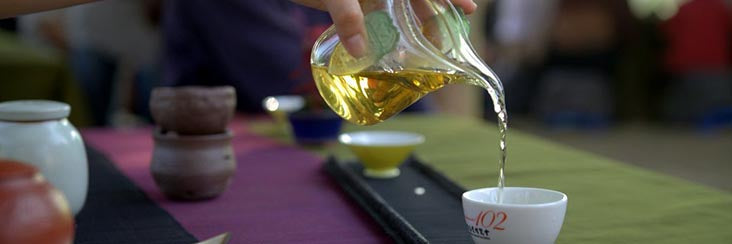
Tea & Music (Champion Tea Tasting #2)

On my second Sunday afternoon motorcycle ride out the to the Nantou Global Tea Expo, I rode directly up the steep slope of Tiger Mountain behind the main event to the Champion Tea Tasting venue. Since the tea tasting would still be happening for another couple of hours, I decided to walk over to the nearby outdoor Tea and Music venue to have a look. Just after I got there, Tony Lin showed up. He is the organizer of the Expo, who also happens to be my adopted big brother and tea mentor.
At the Tea and Music event, guests can sign up for either a morning or afternoon session where live musical performances accompany an outdoor tea party. I arrived just in time for the afternoon session and got one of the last remaining available seats. Moments later - Tony sat down at the last empty seat beside me. It was a nice coincidence that Tony just happened to show up at the same time and place as I did for a relaxing tea session hosted by a teacher of tea art and culture. It was the kind of meeting that couldn't have been planned, given Tony's demands in managing such an event.
We sat, enjoying the tea brewed and served in teaware that was fired in a traditional wood-burning kiln. This produces a natural coloration and glaze caused by the wood ash fusing to the ceramic at extremely high temperatures. This type of ceramic is considered to be conducive to curing the teapot and cups so that they will improve with use and age to brew an optimal pot of tea. The tea was provided by the Lu Gu Farmers' Association, and is my favorite of all tea types, Dong Ding Oolong - medium roasted to produce a balanced yet complex flavor and composition. So we sat, drank tea, enjoyed the soft breeze under the shade of a palm thatched roof and listened to the pieces of music being introduced and performed on traditional Chinese instruments. Overall, the setting and production captured the profound simplicity of Taiwan Tea culture. I told Tony that I wanted to attend a tea tasting afterward, and he said that he had been wanting to go too, but wasn’t in the mood for obligatory schmoozing with all the tea professionals there. So I said that he could go with me and and he agreed.
The young tea judge was surprised by the presence of the event producer and his foreign guest. He did a fine job nevertheless, but his nervousness prompted him to resort to his local Taiwanese dialect in giving the presentation. Tony was inevitably swept away into a conversation with a few older colleagues and barely got to taste the teas, just as he feared.
I was excited about this tasting because I had been told that there would be a few changes in the lineup of teas from the previous week. Instead of the Bi Luo Chun Green Tea from Northern Taiwan, there was a Bao Zhong Oolong - which I definitely preferred. It's fragrance was fresh and herbaceous and the flavor was light yet balanced and smooth with very mild astringency. The second new tea on the lighter/greener end of the spectrum was a Lu Ye Oolong from South-Eastern Taiwan in Taidong County. This is a relatively rare type of Oolong in Taiwan that is produced very green, with minimal oxidation. It has a very delicate quality of being cultivated by the seashore - similar to some Japanese teas. It is subtle and smooth and balanced with a refreshing green character. The third new selection was a Jin Xuan Oolong from Chia Yi County that was processed in the fashion of a High Mountain Oolong. This lightly oxidized, unroasted tea stood in contrast to the other two Jin Xuan selections from Nantou County that were more akin to a Dong Ding Oolong. Overall, it was yet another very educational and privileged experience to taste ten of the world's highest quality teas at one tasting - such a generous gift from the Nantou County Government.


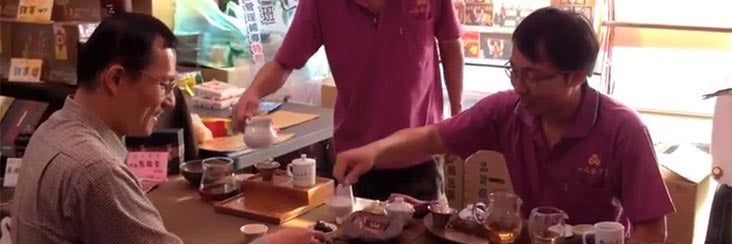
Exhibition Hall Video, Nantou County Global Tea Expo 2013
Grab a cup of Oolong and enjoy this walk through the exhibition hall at the 2013 Nantou Global Tea Expo.
This is a short video of the the main exhibition hall at the 2013 Nantou County Global Tea Expo (Oct 2013).
It was an amazingly friendly atmosphere where tea lovers stop to talk, taste, and learn about teas from all over Taiwan. Tea lovers, merchants, farmers, shop owners, and tourists all attend. Tea artisans and farmers from tea growing regions all over Taiwan brew up their teas all day for anyone to sit down and try, and take home.
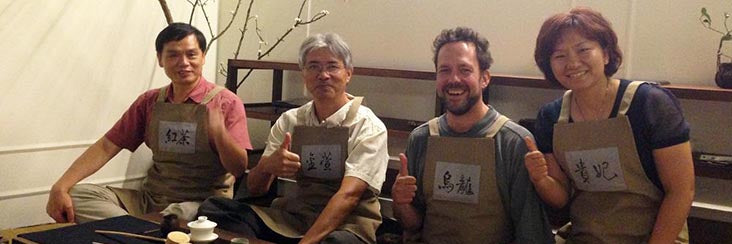
Gathering Around The Hearth: A Contemporary Tea Ceremony

This year at the Nantou County Global Tea Expo, the ‘Tea Culture Exhibition Hall’ has expanded its scope to include a museum-like exhibit and films in addition to live demonstrations of tea culture. In previous years, there were interactive displays where guests could freely observe and partake in tea the brewing ceremonies of their choice. Each space had its own artistic style and cultural orientation from around the world. This year the live demonstrations have been refined and consolidated into three spaces with rotating installations. They still offer variety while allowing for more developed, artistic themes of tea brewing. The other day I got to participate in one of these tea ceremonies that was designed by a few friends from Lu Gu.
The name of the ceremony in Chinese is 圍爐煮茶 which loosely translates as “Gathering Around the Hearth and Brewing Tea”. My friends conceived of the theme and designed the installation themselves, which I experienced as a really clever innovation of traditional Chinese culture. The first two words in the name refer to the traditional family gathering on the last night of the year before Chinese New Year. It is all about the nourishing warmth of a home cooked meal with family. This sentiment is the essence of the tea ceremony that was designed for this year’s event.
Two hosts and five guests made up the tea party that took place on straw tatami mats with small wooden tables arranged around a large iron kettle of boiling water set upon a charcoal stove. The hosts simply facilitated the party while the guests all brewed tea for each other. Each guest was given a type of tea to brew among five of Taiwan’s most recognized specialty teas: Oolong, Aged Tea, High Mountain, Jin Xuan, and Black tea. We each wore a traditional style apron bearing the name of our tea type and were instructed on how the ceremony was to take place.
After the basic methods were explained, it was an easy-going, spontaneous event where we all brewed tea with the tea and tea wares provided. We shared our own brew and received pours from others teapots as we went along. The conversation flowed along with the tea, and it was a friendly gathering around the charcoal stove - a symbol of warmth and sustenance.
Drawing water with handmade Japanese bamboo ladles from the communal antique iron kettle to fill and refill our gong fu teapots again and again to share our distinctly flavored teas was really fun as well as highly satisfying. The presentation that was steeped in tradition and style accommodated a kind of free-for-all tea party where we all got to enjoy not just one type of tea from a single server, but five types of tea from five servers all at once! What a brilliant idea it was on many levels. It was embedded in Taiwan tea culture with touches of the historical Japanese influence, and embodied the naturally free, informal - yet very traditional Taiwanese style that has seduced me into making this island my home.











